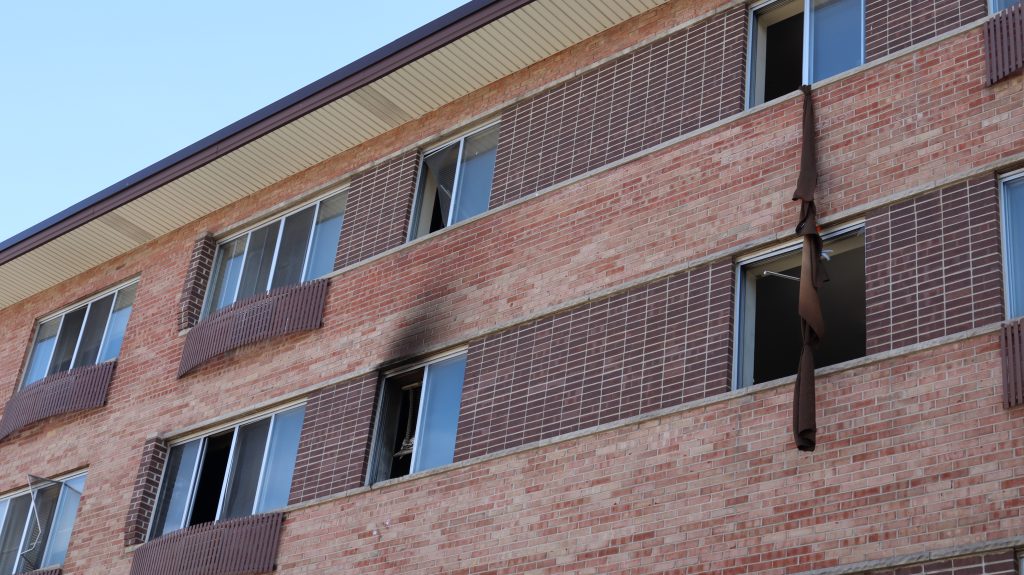Lack of Sprinklers Worsened Deadly Fire, Chief Says
Ald. Bauman calls for investigation of building codes, sprinkler requirements.

Highland Court apartments. Photo taken May 13, 2025 by Graham Kilmer.
The apartment building fire on Milwaukee’s West Side on Sunday turned deadly in part because the building did not have a sprinkler system, according to Milwaukee Fire Chief Aaron Lipski.
“I cannot emphasize, with enough force, the necessity to have sprinklers if humans are going to occupy a building,” Lipski said. “But I am telling you, we don’t have this loss of life, the severity of injuries, this amount of property damage if that building has sprinklers.”
Fire crews responded to the 85-unit Highland Court apartment building, 2725 W. Highland Blvd., Sunday morning within three minutes of the first 911, Lipski said. The size of the building and the fire proved difficult to quickly put out. Fire engines from West Allis and Wauwatosa responded, as well. Roughly 148 firefighters eventually responded.
Without sprinklers, or standpipes to connect to hoses inside the building, fire crews had to hand lay water hoses up to the fourth floor and around long hallways, the fire chief said. Firefighters on ladders pulled 48 people out of the building through windows, and grabbed half a dozen people inside. Five people died as a result of the fire and six are still being treated at area hospitals.
“Without the folks from the Milwaukee Fire Department, firefighters who were running into the fire and pulling people out and saving lives it would have been a far more tragic event than it was,” said Dr. Ben Weston, medical director for Milwaukee County’s EMS system, who responded to the fire alongside another doctor.
Alderman Robert Bauman said he has introduced a file at the Milwaukee Common Council directing the Department of Neighborhood Services and the City Attorneys Office to provide a report investigating the complicated landscape for building codes and sprinkler requirements, and old buildings grandfathered into compliance despite not meeting current regulations.
“There’s a lot of complication to this issue,” Bauman said. “There’s multiple codes involved; there’s the uniform building code involved; there’s the international building code involved.”
There’s also the question of the resources needed to ensure hundreds of multi-unit buildings across the city are retrofitted with sprinkler systems.
“It could increase rents, in a community that’s already rent overburdened,” Bauman said. “So those are factors that need to be considered, but the preservation of life, I think, should be paramount.”
Building codes regarding sprinkler systems is determined by the Wisconsin State Legislature, said Jezamil Arroyo-Vega, Commissioner of Building Inspection.
Lipski said state and national fire chiefs associations have been leaning on governments across the country, including the Wisconsin Legislature to “get moving on sprinklers.” He said the Legislature should update the building code to strenghen sprinkler requirements. “Sprinklers save lives,” he said.
The cause of the fire is still being investigated and foul play has not been ruled out. A fire investigation relies on a “scientific method” to determine the cause, collecting as much evidence as possible, which is difficult as fires typically destroy most of it, Lipski said.
“Obviously, obviously, obviously, we would really love to know exactly what started this fire,” Lipski said. “Let me just say this, the potential for an intentional act cannot be ruled out.”

Existing members must be signed in to see the interactive map. Sign in.
If you think stories like this are important, become a member of Urban Milwaukee and help support real, independent journalism. Plus you get some cool added benefits.




















